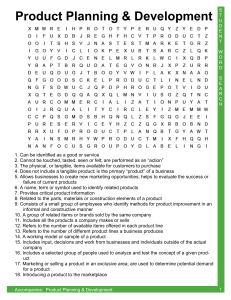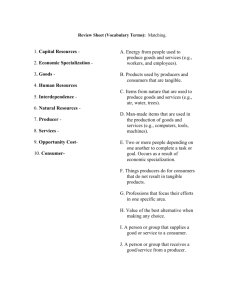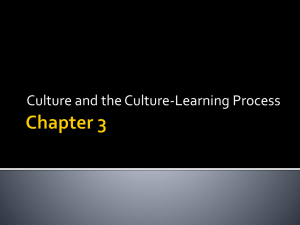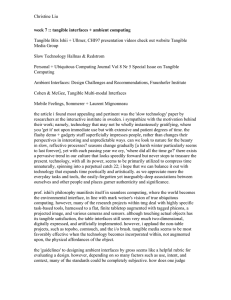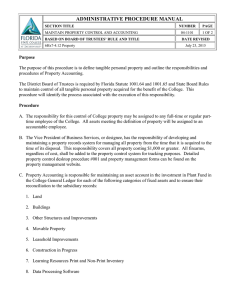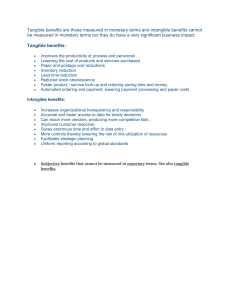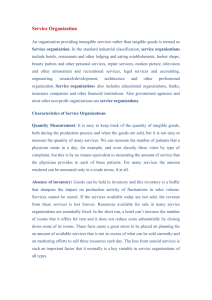Ind. 4.03 * Acquire a foundational knowledge of product/service
advertisement
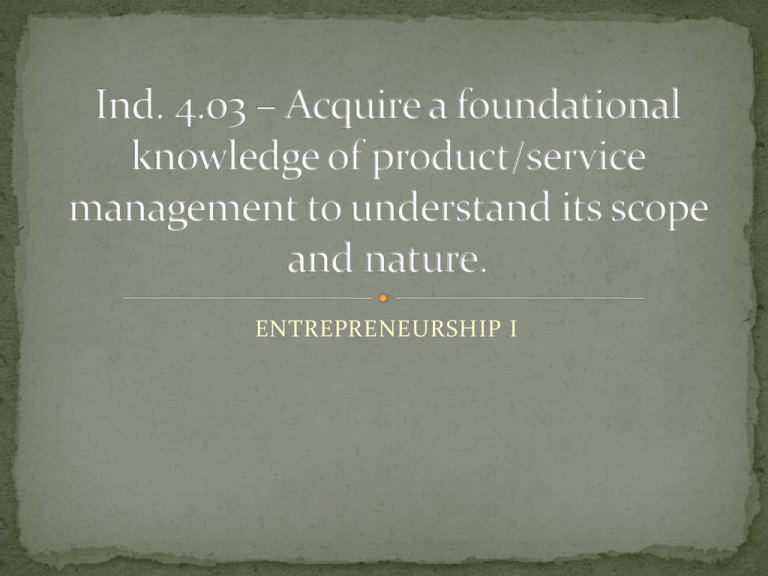
ENTREPRENEURSHIP I Think about the last product you purchased…. Have you ever thought about who’s responsible for those products and what their job duties entail? Managing products & services effectively is vital to the success of any business! Products just don’t appear on the market overnight… Chick-fil-A spent 6 years developing a chicken sandwich that costs less than $4 The Polio vaccine took over 10 years to develop Google took over 3 years to develop Those examples are just the beginning of the products life, products must be managed throughout their life! Product/service management is a marketing function that involves obtaining, developing, maintaining, and improving a product or service mix in response to market opportunities. Products can be either a good or a service….. Goods are tangible objects that can be manufactured & produced for resale, along with its associated benefits. Products can be either a good or a service….. Services are intangible activities performed by other people in exchange for payment along, along with its associated benefits. Two types : Product-related: the service is attached to some sort of tangible good (ie. Cell phone & service) Pure: the service is not attached to any tangible good The service itself is the business’s primary product (i.e banks) In a big company, an entire product/service management department may exist, but even in a small business, the owner or manager is constantly making decisions about what to offer to customers in the product/service mix, throughout the products’ life cycle. Product/service management involves many activities, such as: Discovering new-product opportunities Developing marketing plans and strategies for products Coordinating the product mix Sustaining successful products as long as possible Reassessing products that are not meeting expectations Eliminating products that have become liabilities Customer needs and wants Company goals and strategies Costs and available resources Competition The product itself Government regulations Stage in the product life cycle (introduction, growth, maturity, and decline) Business and economic trends Improved sales and profits Improved market share and competitiveness New customers Less exposure to financial risk Positioning – the strategy in which a business creates a certain image or impression of a product in the mind of the customer Improves Success Gives the product an image A corporate brand is all of the combined impressions & experiences associated with a company Write the first “image” that comes to mind for each product listed on the index card. 1) Develop New Products New products are those that have never been offered before, modified, or presented or distributed differently Some ways businesses obtain new products is to purchase them, license them, acquire a new company, or develop them internally Steps for internal development: Generate idea Screen ideas Test product concept (Protype) Conduct feasibility analysis Develop product Test Market (introducing the product to a limited market) Commercialize the product 2) Monitor Existing Products Existing products are those goods and services already on the market They are monitored for sales, profit, market share, and how well they are meeting goals and expectations Possible decisions that can be made: keep it as is, modify, reposition (change marketing strategy), or eliminate 3) Eliminate Weak Products (aka Product Discontinuation) Weak products are those with declining sales/profitability Some products can be dropped immediately while others need to be withdrawn over a period of time to allow customers to find replacements and maintain good will
